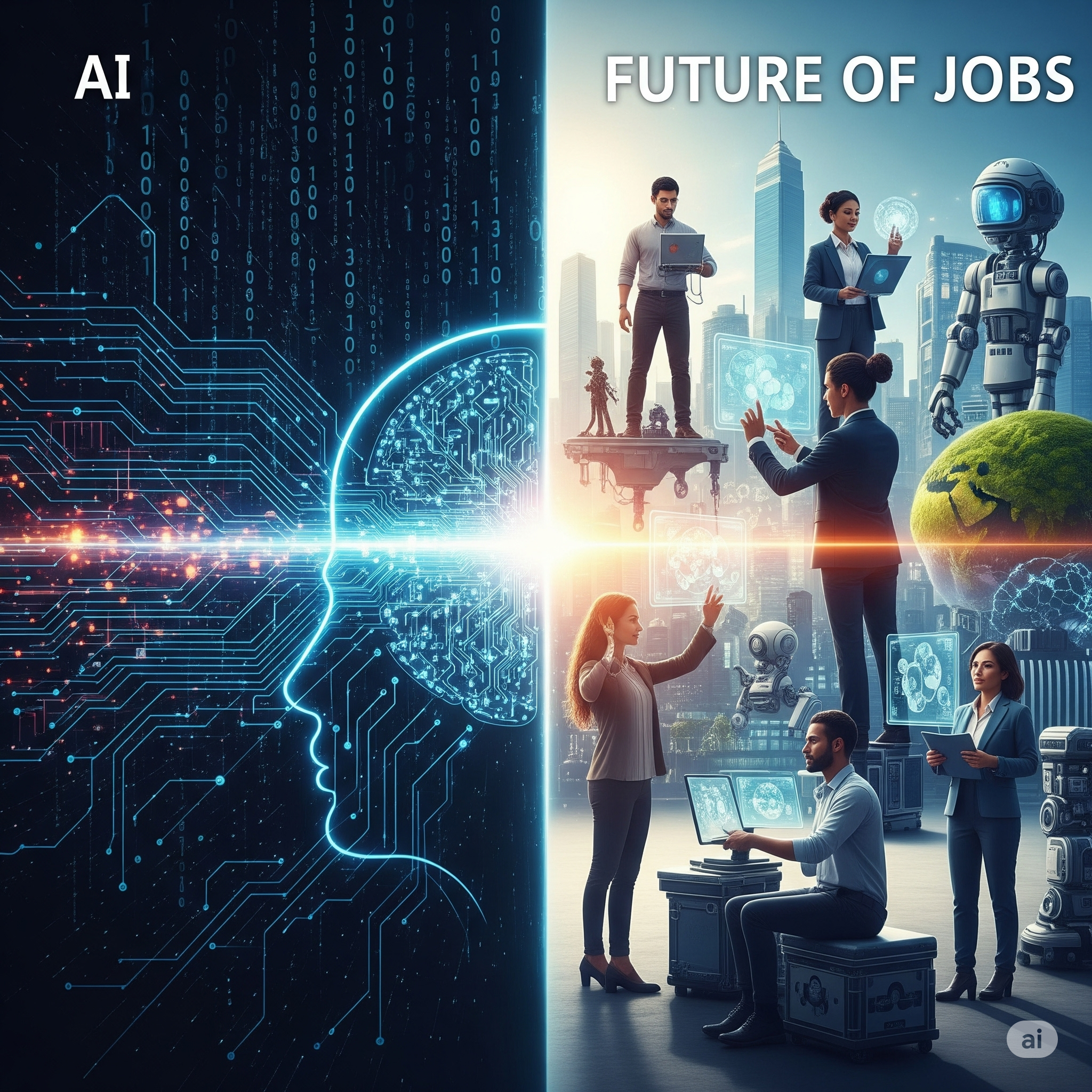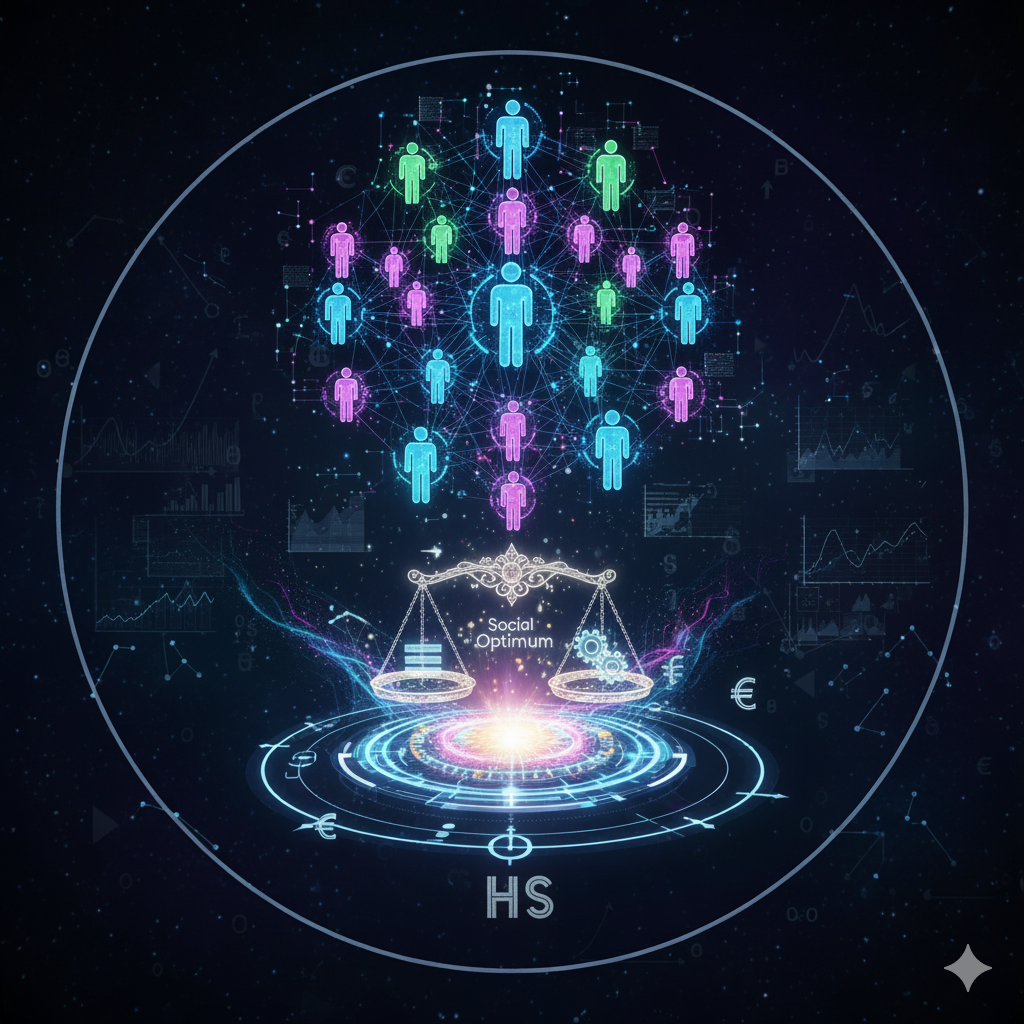Introduction
Artificial Intelligence (AI) is transforming the global economy, reshaping industries, and redefining the nature of work. As AI technologies like machine learning, natural language processing, robotics, and automation advance, they are not only increasing productivity but also altering job structures across sectors. Understanding the impact of AI on employment is crucial for policymakers, educators, businesses, and workers to prepare for a future where human labor and intelligent machines coexist.
This article explores the multifaceted relationship between AI and employment, analyzing its potential to create, transform, and displace jobs. It also highlights strategies for workforce adaptation, policy responses, and skill development to ensure inclusive economic growth.
Understanding Artificial Intelligence
Artificial Intelligence refers to computer systems capable of performing tasks that typically require human intelligence. These tasks include problem-solving, pattern recognition, decision-making, and learning from data. Key AI technologies affecting the labor market include:
- Machine Learning (ML) – Algorithms that analyze data, identify patterns, and make predictions.
- Natural Language Processing (NLP) – Enables machines to understand and generate human language.
- Robotics and Automation – Machines capable of performing physical or repetitive tasks.
- Computer Vision – AI systems that interpret and process visual information.
- Expert Systems and Decision Support – AI systems that assist in complex decision-making.
AI’s growing capabilities have significant implications for workforce dynamics, productivity, and economic development.
The Impact of AI on Jobs
AI affects employment in three primary ways: job creation, job transformation, and job displacement.
1. Job Creation
AI has the potential to generate new employment opportunities in emerging industries. Examples include:
- AI development and maintenance – Data scientists, AI engineers, and machine learning specialists.
- Robotics and automation sectors – Robotics engineers, system integrators, and maintenance specialists.
- AI-enabled services – Customer experience management, predictive analytics, and AI-driven healthcare.
- Entrepreneurship and innovation – Startups leveraging AI for new products and services create employment in technology, marketing, and operations.
2. Job Transformation
AI changes the nature of many existing jobs rather than replacing them entirely:
- Upskilling requirements – Workers need advanced digital, analytical, and problem-solving skills.
- Human-AI collaboration – Employees collaborate with AI systems to enhance decision-making, productivity, and service quality.
- Task redistribution – Routine and repetitive tasks are automated, while humans focus on creative, strategic, and interpersonal functions.
Examples: AI in healthcare assists doctors in diagnostics, allowing more time for patient care; AI in finance automates data analysis while humans manage client relations and strategy.
3. Job Displacement
Certain roles may become redundant due to AI-driven automation:
- Routine administrative tasks – Data entry, bookkeeping, and scheduling can be automated.
- Manufacturing and assembly line jobs – Robotics and AI reduce the need for manual labor.
- Customer service roles – Chatbots and automated support systems replace repetitive query handling.
Displacement is not uniform; lower-skilled, repetitive jobs are more vulnerable, whereas roles requiring creativity, social intelligence, and complex problem-solving are less affected.
Sector-Wise Implications of AI on Employment
1. Manufacturing
- Robotics and AI-driven production lines increase efficiency and reduce costs.
- Some assembly line jobs are replaced, but new roles in robot maintenance, programming, and process optimization emerge.
- Economic productivity gains can create indirect employment through higher demand for goods.
2. Healthcare
- AI improves diagnostics, predictive analytics, and treatment planning.
- Physicians, nurses, and technicians collaborate with AI tools, enhancing service quality.
- New jobs arise in healthcare AI development, data management, and telemedicine services.
3. Finance
- AI automates tasks like fraud detection, algorithmic trading, and risk assessment.
- Human roles shift towards strategic decision-making, client relations, and compliance oversight.
- AI-driven fintech startups create opportunities in software development, analytics, and customer engagement.
4. Retail and Customer Service
- Chatbots, recommendation engines, and automated checkouts transform customer interactions.
- Jobs shift from routine customer support to experience management, AI system oversight, and data analytics.
5. Transportation and Logistics
- Autonomous vehicles, drones, and AI-based route optimization increase efficiency.
- Delivery and logistics roles may decline, but new opportunities arise in fleet management, AI system monitoring, and maintenance.
6. Education
- AI-powered platforms personalize learning, automate grading, and support teaching.
- Educators focus on mentorship, critical thinking development, and curriculum design.
- Edtech industry growth creates roles in content creation, platform management, and AI system development.
Economic Implications of AI-Driven Job Changes
- Productivity Gains – AI increases output, reduces operational costs, and enhances competitiveness.
- Income Inequality – High-skilled workers benefit disproportionately, while low-skilled workers face displacement risks.
- Labor Market Polarization – Growth in high-skill and low-skill jobs, with a decline in middle-skill routine roles.
- Regional Economic Shifts – AI adoption varies across regions, affecting local employment patterns and migration trends.
- Global Competitiveness – Nations investing in AI and workforce upskilling gain economic advantages in technology-intensive sectors.
Strategies to Mitigate Job Displacement
1. Reskilling and Upskilling
- Continuous training programs for workers to acquire digital, analytical, and cognitive skills.
- Collaboration between governments, educational institutions, and industries to align curricula with AI-driven labor market demands.
2. Lifelong Learning
- Adoption of flexible and accessible learning platforms, including online courses, vocational programs, and certifications.
- Encourages workers to adapt to technological changes throughout their careers.
3. Public Policy Interventions
- Social safety nets for displaced workers, including unemployment benefits and retraining subsidies.
- Incentives for industries to adopt human-AI collaboration models rather than full automation.
4. Encouraging Entrepreneurship
- Support for AI startups and technology-driven ventures creates new employment opportunities.
- Incubators, funding programs, and policy frameworks can stimulate job creation in emerging sectors.
5. Inclusive Workforce Planning
- Special focus on vulnerable groups, including women, youth, and low-skilled workers.
- Policies promoting equitable access to AI-related education and training reduce social disparities.
The Role of Governments and Institutions
Governments play a crucial role in shaping the impact of AI on employment:
- Regulatory Frameworks – Ensuring ethical AI deployment and balancing automation with social welfare.
- Education and Training Policies – Investing in STEM education, vocational training, and AI literacy programs.
- Public-Private Partnerships – Collaboration between industries, academia, and government to address skill gaps.
- Labor Market Monitoring – Tracking AI adoption trends and employment impacts to guide policy interventions.
- Global Collaboration – Sharing best practices, standards, and technologies to manage AI’s economic transition.
Global Examples and Best Practices
- Germany – Vocational training systems integrate AI and automation technologies to enhance workforce adaptability.
- Singapore – National AI strategy emphasizes reskilling, digital literacy, and AI adoption across industries.
- United States – Tech-driven economy invests in AI research, innovation, and workforce development.
- South Korea – Emphasizes AI research, industrial automation, and education reforms to maintain competitiveness.
Lessons: Proactive investment in education, skill development, and policy planning is essential to harness AI’s benefits while minimizing negative employment effects.
Future of Work in an AI-Driven Economy
- Human-AI Collaboration – The future workforce will work alongside AI systems to augment decision-making and productivity.
- Emerging Roles – Data analysts, AI ethicists, robot maintenance technicians, and digital transformation specialists will be in demand.
- Flexible Work Models – Remote work, gig economy, and project-based employment will coexist with AI-enabled productivity.
- Focus on Soft Skills – Creativity, critical thinking, emotional intelligence, and problem-solving will become increasingly valuable.
- Continuous Learning Culture – Lifelong learning will be essential for maintaining employability and career growth.
Conclusion
Artificial Intelligence is transforming the nature of work, creating opportunities, redefining roles, and posing challenges for workforce management. While AI can boost productivity, innovation, and economic growth, it also risks job displacement, income inequality, and labor market polarization.
The future of jobs depends on proactive strategies that combine education, skill development, lifelong learning, and inclusive policies. Governments, educational institutions, and industries must collaborate to reskill and upskill workers, foster human-AI collaboration, and create new economic opportunities.
By embracing AI responsibly, societies can ensure that technological progress drives economic growth, employment generation, and inclusive development, rather than exacerbating social inequalities. Preparing the workforce for AI is not just a technological necessity—it is a strategic imperative for sustainable economic prosperity in the 21st century.




